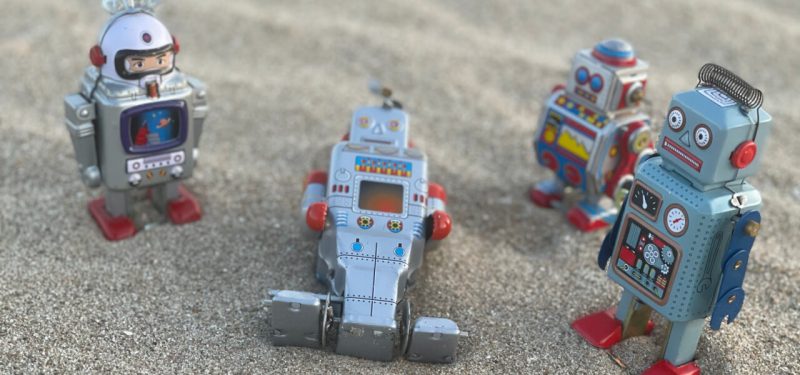Industry 4.0 has brought machines, software, the Internet, and people into a hyper-connected ecosystem that needs to be tested from end to end. The tests you create for the devices and associated software in those ecosystems needs to be automated for both agility and boosting the efficiency and reliability of the tests themselves. So how do you do that?
Robotics can turbocharge traditional testing methods by leveraging smarter technologies such as bots, augmented reality/virtual reality (AR/VR), and the Internet of Things (IoT). These collaborative robots, or "cobots," can work in partnership with humans to perform repetitive tasks, allow for remote testing, and ensure human safety in hazardous environments.
Until now, test engineers have been testing hardware (physical) and software (digital) separately. Now, a single ecosystem is bringing them closer together. You need cobots to perform end-to-end test automation that can address this physical-digital convergence.
What are cobots?
Robots help perform tasks that are dangerous, dirty, dismal, or dull, but to prevent accidents, they need to be separated from human contact. Cobots consist of hardware with augmented intelligence that makes robotic interactions safer and more intelligent and accurate in industries such as manufacturing, healthcare, retail, and logistics.
Test engineers have long used test automation to simulate tasks and human interactions with a computer program. Cobots automate the physical actions those programs experience in the world of the IoT. To trigger a sensor or to perform a checkout at a grocery store, for example, a simulation of physical human actions is needed, and those actions need to happen with speed and precision. This is where cobots come into play.
A cobot is typically a combination of physical and digital attributes that can be used as a testing device as part of your automated system testing. Depending on the level of intelligence needed, you can find products from companies including Hahn Robotics (with its cobot named Sawyer) and Automata (Eva) that might make a suitable testing cobot. At Cognizant, we build simple robots (we call them TeBots, for "testing robots") for simple movements and procure others for more complex tasks.
These cobots need to be taught how and what to test; that's where human testers come in. Cobots are like traditional test automation tools in that they still need to be programmed with regard to the actions and validations to be performed.
A real-world example
Let's say your retail store checkout counter has self-scanning, touchscreen computers, payment terminals, NFC-enabled cards, and receipt printers. You could use a cobot to simulate completion of the customer's shopping journey at a self-checkout kiosk. This allows for 24/7 validation and digitized documentation, reducing point-of-sale testing cycle time by half.
Another example might be devices in a smart home that interact by way of a server (hub), a motion sensor, and a smartphone app. To test this ecosystem, you need to emulate human actions, which might include physical movement or voice control. A cobot can take an action to turn on a light and then test the outcome.
Watch this space
The IoT space is evolving rapidly, and, in the near future, the line between the physical and the digital spaces will disappear. You will be part of a future where cobots, programmed by humans, will be sitting in and testing an autonomous car, with humans watching from a safe distance.
Testers mastered software test automation. Given the rate at which IoT is conquering the market with the advent of Industry 4.0, you need to focus on testing IoT products, on making sure they easily integrate, and on redefining your test approaches appropriately.
Cobots are a good example of how actions performed by humans can be mimicked by robots, making testing easier and safer while ensuring increased precision and productivity. Now is the time to learn how to apply cobots to test such interactions.
Want to know more about cobots, where to get them, and how to use them in your testing? Attend my EuroStar conference session, "Introducing 'Cobots' in QA: Testing in the 4th industrial revolution," where I'll go into more detail. The conference runs September 28-30, 2021. TechBeacon readers can save 10% on individual tickets using code "TechBeacon10" until September 6.
Keep learning
Take a deep dive into the state of quality with TechBeacon's Guide. Plus: Download the free World Quality Report 2022-23.
Put performance engineering into practice with these top 10 performance engineering techniques that work.
Find to tools you need with TechBeacon's Buyer's Guide for Selecting Software Test Automation Tools.
Discover best practices for reducing software defects with TechBeacon's Guide.
- Take your testing career to the next level. TechBeacon's Careers Topic Center provides expert advice to prepare you for your next move.


